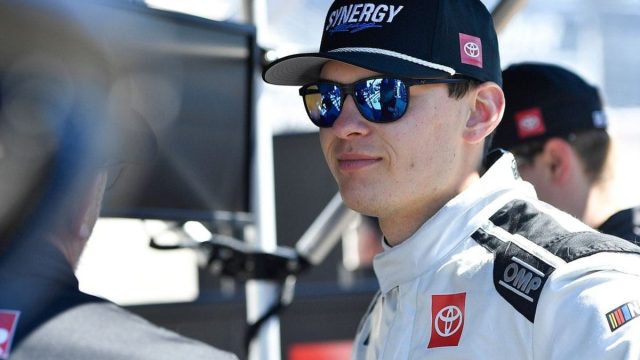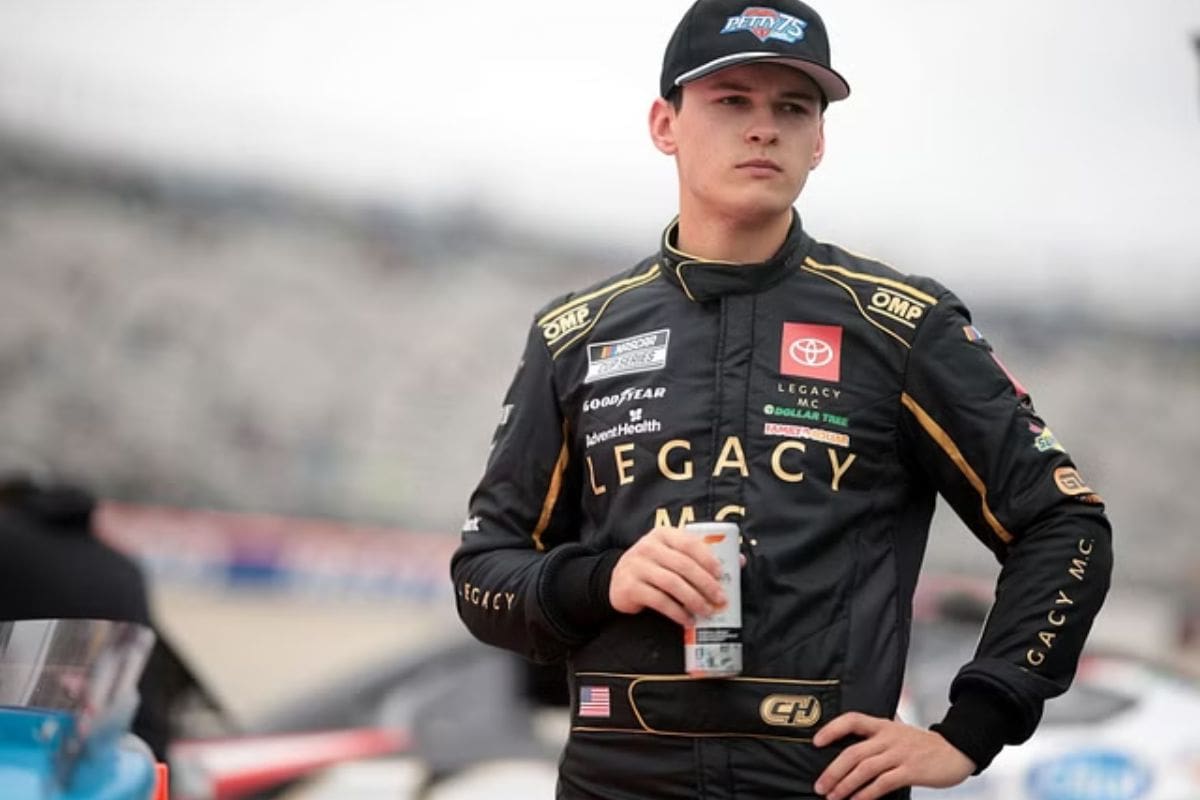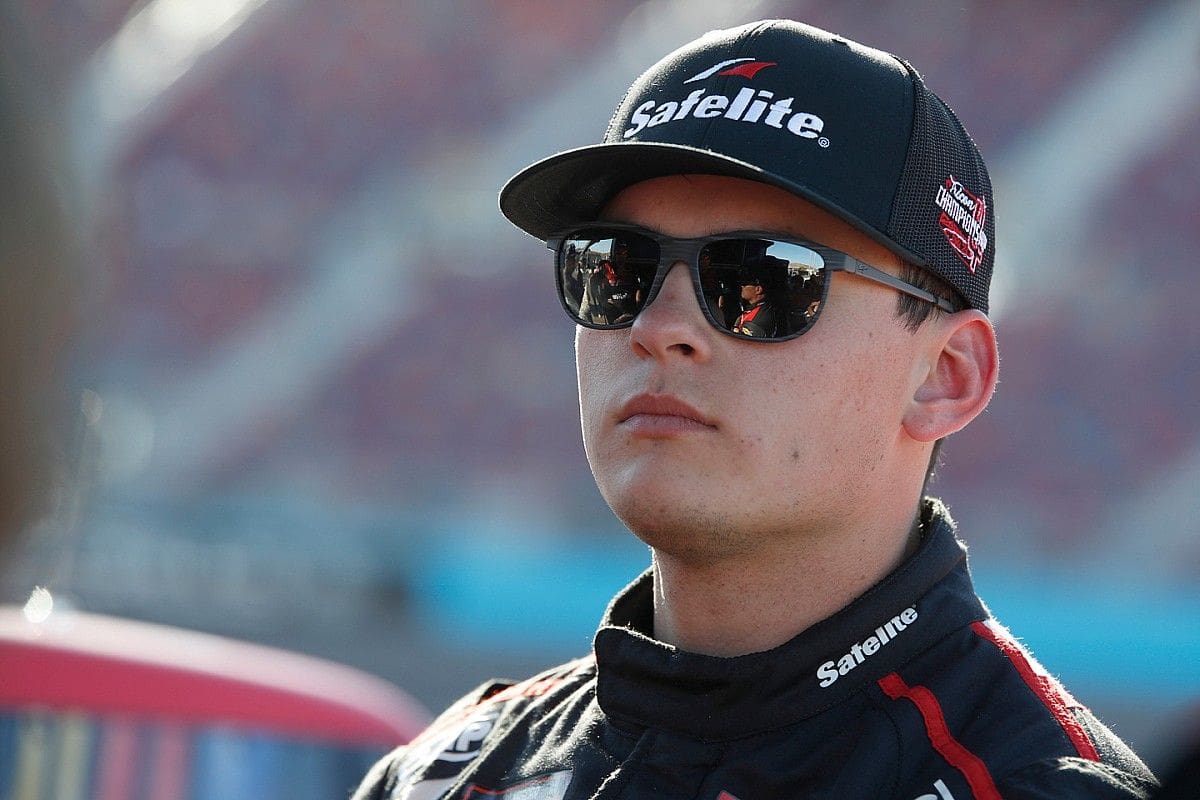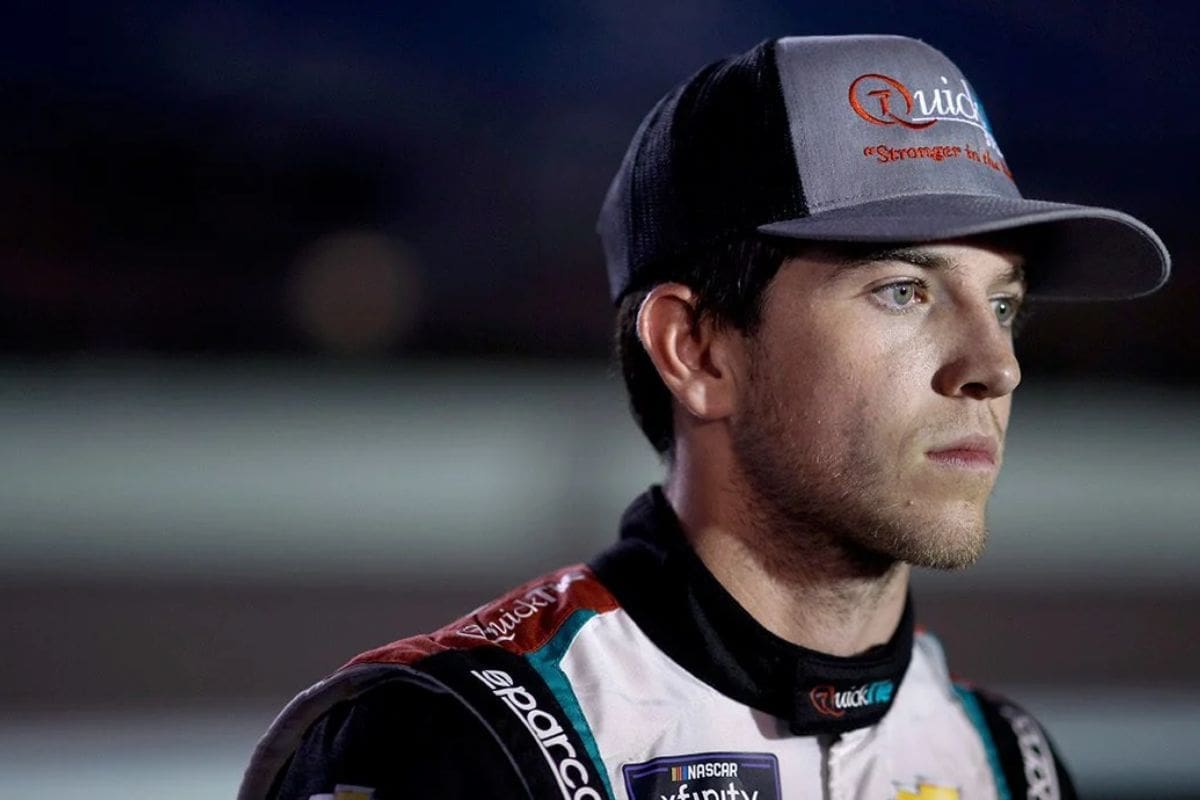Corey Heim’s Bold Strategy Fails at Atlanta: Corey Heim‘s recent performance at Atlanta Motor Speedway serves as a compelling case study of the complexities of aggressive racing strategies. His last-lap collision, while a setback, highlights a critical tension between ambition and teamwork within the competitive landscape of the Xfinity Series. Heim’s willingness to push boundaries, even at personal risk, raises questions about the sustainability of such tactics in a team-oriented sport. As discussions unfold around his approach, the implications for future races and team dynamics remain intriguing, hinting at broader shifts that could redefine how drivers balance personal goals with collective success.
Key Highlights
- Corey Heim aimed for his first Xfinity win at Atlanta, employing aggressive tactics to push teammate Chandler Smith and overtake Austin Hill.
- His bold last-lap maneuver resulted in a crash, ending his race and allowing competitors Parker Kligerman and A.J. Allmendinger to capitalize.
- Despite the setback, Heim expressed pride in his risk-taking, acknowledging the necessity of aggression in NASCAR racing.
- The incident caused tension with teammate Chandler Smith, who felt Heim prioritized individual success over team collaboration.
- Lessons learned from the Atlanta experience may reshape team dynamics and strategies for future races, emphasizing communication and trust.
Last-Lap Collision and Its Impact
In motorsport, even the slightest miscalculation can lead to dramatic consequences, as exemplified by Corey Heim’s last-lap collision at Atlanta Motor Speedway. As the Focused Health 250 approached its thrilling finale, Heim found himself in a promising position, poised for a potential victory. However, a sudden entanglement with Austin Hill turned a promising finish into a heart-wrenching disaster, sending the No. 26 car crashing into the wall.
This collision not only deprived Heim of a hard-fought win but also resonated throughout the Sam Hunt Racing team, impacting his fellow competitor, Chandler Smith. Smith’s fourth-place finish reflected a broader narrative of frustration, as he was forced to settle behind his teammate due to the ramifications of the incident. This emphasizes a critical aspect of racing dynamics: the interconnectedness of driver performance and team strategy.
Corey Heim’s Performance and Strategy
Often demonstrating a keen understanding of race dynamics, Corey Heim’s performance at Atlanta highlighted both his potential and the inherent risks of aggressive tactics. Competing for Sam Hunt Racing, Heim displayed his skill by positioning himself for a strong finish, ultimately battling for his initial Xfinity win. His tactical choice to push Austin Hill ahead while simultaneously aiding teammate Chandler Smith exemplified a calculated approach to teamwork and individual ambition.
However, the execution of this plan took a turn in the final laps. As Heim sought to overtake Hill on the outside, the resulting crash against the wall not only ended his race but also jeopardized Smith’s chances. This incident ultimately allowed competitors Parker Kligerman and A.J. Allmendinger to capitalize, securing the subsequent and final positions, respectively.
In the NASCAR Xfinity landscape, Heim’s ambition reflects both the thrilling possibilities and the perilous nature of aggressive racing tactics. His performance reinforces the notion that while risks can yield rewards, they can just as easily lead to missed opportunities.
Post-Race Reflections and Justifications
Corey Heim’s post-race reflections reveal a deep understanding of the environment inherent in NASCAR racing. His frank acknowledgment of the last-lap maneuver exemplifies the intricate balance between aggression and strategy that defines super speedway racing. In a post-race interview, Heim articulated his decision to stay high on the track despite the risks involved, citing the superior handling of his vehicle over raw speed. His assertion, “I wanted to try and get to the top of the 21 just kind of ran me out of room,” highlights a critical aspect of racing: the necessity to capitalize on opportunities, even when they entail potential conflict with competitors.
Heim’s insights reflect a maturity that transcends the momentary disappointment of the race outcome. By expressing empathy for his competitor’s perspective, he demonstrates a detailed understanding of race dynamics, acknowledging that aggressive play is a fundamental component of the sport. His statement, “that’s not to say I wouldn’t have done the exact same thing if I was in his spot”.
“I thought it was in my best interest to stay high. We didn’t have a ton of raw speed, but we had great handling, so I wanted to try and get to the top of the 21 just kind of ran me out of room but uh that’s not to say. I wouldn’t have done the exact same thing if I was in his spot you know it’s just part of the super speed racing you have to be aggressive and take advantage of your opportunities just kind of put ourselves in a really good spot there.” – Heim
Heim’s reflections serve not only as justifications for his actions but also as a symbol of the evolving mindset of a young driver steering through the complexities of NASCAR. His willingness to welcome aggression while maintaining respect for his peers positions him as a formidable contender in the series, poised for growth and continued excellence on the track.
Previous Incident and Its Aftermath
The aftermath of the stage two restart served as an essential moment in the race, highlighting the intense competition and unpredictability that characterizes NASCAR. During this significant phase, Corey Heim and Christian Eckes made contact down the backstretch, resulting in a cut left front tire for Heim that necessitated an unplanned pit stop. This incident not only emphasized the risks associated with aggressive driving but also exemplified the thin margins that drivers navigate in their quest for victory.
“It’s not like I went straight to the wall, Corey.” – Eckes
“Ah, you pretty much did, I was nosing into the wall, and I jammed the wheel left and I hit you.” – Heim
“I was giving you a lane and misjudged it.” Eckes
by a lot. By half a truck length.” – Heim
Interestingly, the caution was triggered by Conor Daly’s unrelated flat tire, which providentially allowed Heim to receive a free pass as the initial truck one lap down. This twist of fate permitted Heim to rally back into the fight, and he managed to secure stage points despite his earlier setback.
However, the final stage proved more challenging for him, culminating in a 17th-place finish. In clear contrast, Eckes emerged as a formidable competitor, finishing as the runner-up after relinquishing the lead to Ty Majeski late in the race.
This episode serves as a reflection of the unpredictable nature of motorsport, where a single incident can dramatically alter the course of a race. Corey Heim’s reflections on this event reveal an appreciation for the fellowship among drivers, even in the face of fierce competition.
Yet, the dissatisfaction expressed by his teammate, Chandler Smith, hints at the underlying tensions that can arise in such high-stakes environments, revealing the complex dynamics at play within racing teams.
Chandler Smith’s Discontent and Team Dynamics
Frustration simmered within Chandler Smith as the race unfolded, revealing the intricate dynamics of teamwork in the high-pressure environment of NASCAR. Smith’s disappointment stemmed from his expectation of collaboration with teammate Corey Heim, which ultimately went unreciprocated. While Heim sought individual glory, Smith found himself in a precarious position, left to navigate the chaotic aftermath of Heim’s ill-fated tactic against Austin Hill.
In the world of racing, the delicate balance between personal ambition and teamwork is constantly tested. Smith’s lamentation about his decision to prioritize teamwork emphasizes the complexity of these relationships. He expressed a palpable sense of regret, contemplating the potential benefits of a more self-serving strategy. “I could have been more selfish,” he remarked, reflecting a critical moment where collective strategy faltered.
“I’m kind of speechless, honestly. There’s a lot of different things I could have done. I could have been more selfish and when I got clear, went to the bottom to cover that and just control the race for sure, but I was trying to be a good teammate, and it didn’t pay off for me today, as usual.” – Smith
This incident not only highlights Smith’s discontent but also stresses the broader implications for team dynamics within NASCAR. The environment demands a delicate interplay between cooperation and competition, and the failure to align these objectives can have lasting repercussions. As Smith witnessed rivals like Parker Kligerman and A.J. Allmendinger capitalize on the ensuing chaos, the cost of his altruism became painfully evident.
Moving forward, it remains to be seen how this experience will influence Smith’s approach and his relationship with Heim. The lessons learned in Atlanta will certainly shape their strategies as the season progresses towards the Glen, where teamwork and individual ambition must once again find their equilibrium.
News in Brief: Corey Heim’s Bold Strategy Fails at Atlanta
Corey Heim’s daring strategy at Atlanta Motor Speedway, while ultimately resulting in a last-lap crash, highlights the complexities of balancing individual ambition with team dynamics in competitive racing. This incident not only reflects the inherent risks associated with aggressive tactics but also serves as a catalyst for future discussions on teamwork and strategy within the team. The lessons drawn from this experience may influence how drivers approach high-stakes situations, potentially reshaping competitive strategies in subsequent races.
ALSO READ: Corey Heim’s Controversial Push Sparks Drama as Austin Hill Clinches Victory at Atlanta



